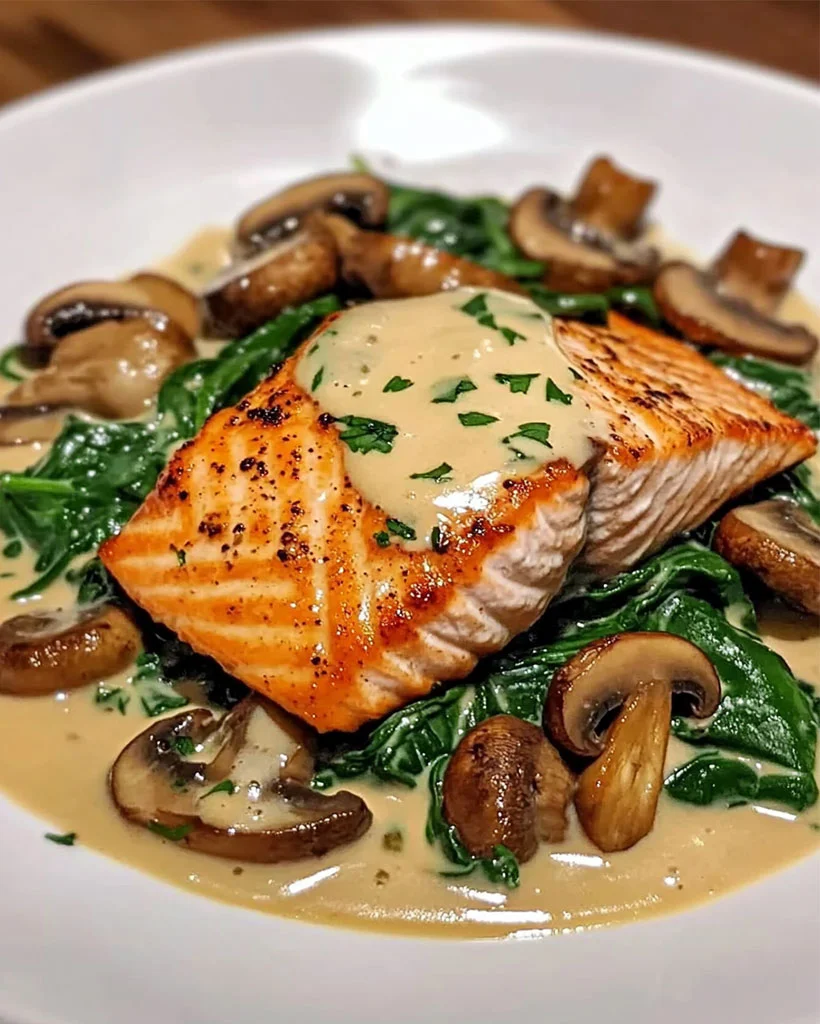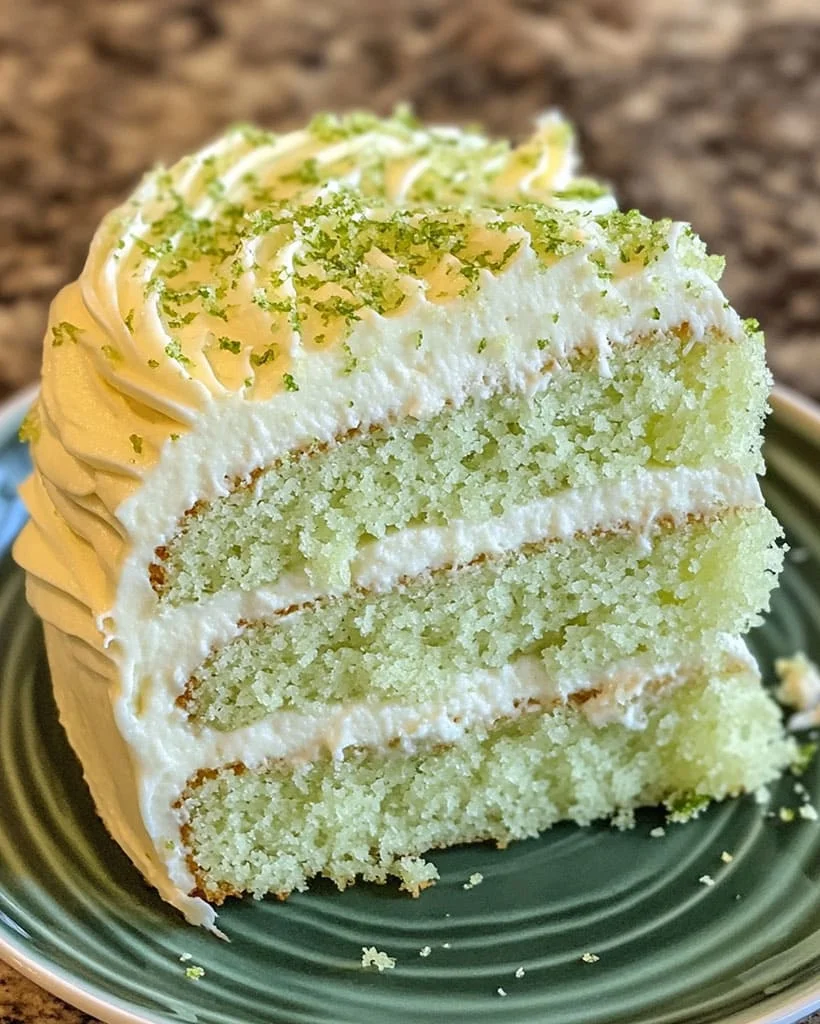Welcome to your new favorite baked fish recipe! Today, I’m thrilled to share a delicious dish that combines the fresh taste of sea bream with the vibrant and aromatic flavors of Moroccan Chermoula. Whether you’re looking to impress at a dinner party or simply want to elevate your weeknight meal, this recipe is sure to become a staple in your kitchen. Let’s dive into the world of Mediterranean cuisine with this Baked Sea Bream with Moroccan Chermoula!
Introduction
Moroccan cuisine is famous for its bold, aromatic flavors, and Chermoula is one of its most iconic sauces. Traditionally used for marinating fish, Chermoula brings together a medley of fresh herbs, spices, garlic, and citrus to create a zesty, rich flavor profile that perfectly complements seafood. Sea bream, with its tender white flesh and delicate taste, pairs beautifully with this bold marinade. Not only does this dish burst with flavor, but it’s also an incredibly healthy option, packed with protein, vitamins, and healthy fats. This Baked Sea Bream with Moroccan Chermoula will transport your taste buds to the vibrant streets of Morocco!
Ingredients
To prepare this comforting Baked Sea Bream with Moroccan Chermoula, you’ll need the following ingredients:
- 1 sea bream (700-800g)
- Chermoula sauce:
- 2 tbsp finely chopped parsley
- 2 tbsp finely chopped cilantro
- 3 garlic cloves, grated
- 1 tsp sweet paprika
- 1 tsp cumin
- ½ tsp chili powder
- 1 tsp salt
- 4-6 tbsp lemon juice
- 2 tbsp water
- 2-3 tbsp tomato pulp or 1 tbsp tomato paste
- 1 cup water
- 2 potatoes, thinly sliced
- 2 tomatoes, sliced
- Olive oil
- Green olives and preserved lemon for garnish
[convertkit_form form=”6763696″]
How to Make Baked Sea Bream with Moroccan Chermoula
Follow these steps to create your own delicious Baked Sea Bream with Moroccan Chermoula:
- Prepare the Fish: Start by cleaning, gutting, and scaling the sea bream. Make incisions on both sides of the fish using a sharp knife. This will help the marinade seep into the fish more effectively, infusing it with incredible flavor.
- Make the Chermoula: In a bowl, mix together the chermoula ingredients, including parsley, cilantro, garlic, paprika, cumin, chili powder, salt, lemon juice, water, and tomato pulp or paste. Rub this vibrant mixture all over the sea bream, making sure to get it into the incisions and inside the fish cavity. For the best results, let the fish marinate in the refrigerator for a few hours.
- Prepare the Dish: Preheat your oven to 180°C (350°F). In an ovenproof dish, drizzle some olive oil and layer the bottom with the thinly sliced potatoes. Place the marinated sea bream on top of the potatoes, and then add the remaining potato and tomato slices around the fish.
- Add the Sauce: Mix the remaining chermoula with 1 cup of water, then pour this flavorful mixture over the fish and vegetables in the dish. Cover the dish with parchment paper or aluminum foil to retain moisture during cooking.
- Bake the Fish: Bake the dish for 45 minutes. In the final 10 minutes of cooking, remove the cover and add green olives and slices of preserved lemon for garnish. This will add a beautiful, tangy finish to the dish.
- Serve and Enjoy: Serve your Baked Sea Bream with Moroccan Chermoula with some fresh, homemade bread to soak up all the delicious juices!
Helpful Tips
- Marinate for Flavor: If you have the time, let your fish marinate for at least 2-3 hours. This allows the chermoula to really permeate the flesh and infuse every bite with flavor.
- Preserved Lemons: If you don’t have preserved lemons on hand, you can substitute them with fresh lemon slices, although the flavor will be slightly less intense.
- Fish Variations: While sea bream works wonderfully in this recipe, you can also use other firm white fish, such as snapper or sea bass, as an alternative.
Cooking Tips
- Use Fresh Herbs: Fresh parsley and cilantro are key to the bright flavors of the chermoula sauce. Make sure your herbs are vibrant and green for the best results.
- Oven Thermometer: If you’re unsure whether your oven’s temperature is accurate, using an oven thermometer can help ensure your fish bakes evenly at the correct temperature.
- Fish Check: The fish is done when the flesh easily flakes with a fork and the internal temperature reaches 145°F (63°C). Be careful not to overcook the fish, as it can become dry.
Serving Suggestions
Baked Sea Bream with Moroccan Chermoula pairs beautifully with a variety of side dishes. Consider serving it with:
- Couscous: This light and fluffy grain is a perfect complement to the rich flavors of the fish and chermoula.
- Roasted Vegetables: Carrots, bell peppers, and zucchini roasted in olive oil and spices make a great side.
- Salads: A fresh, crisp salad with a lemon vinaigrette will provide a refreshing balance to the dish.
Pair this meal with a chilled glass of white wine, like Sauvignon Blanc or a crisp Riesling, to enhance the citrusy flavors of the chermoula.
Nutritional Information
This Baked Sea Bream with Moroccan Chermoula is not only delicious but also packed with essential nutrients that support a balanced diet. Here’s a brief summary of the health benefits associated with key ingredients:
- Sea Bream is an excellent source of high-quality protein, omega-3 fatty acids, and essential vitamins like B12 and D.
- Chermoula Sauce provides antioxidants from fresh herbs, garlic, and spices that help boost immunity and reduce inflammation.
Nutritional Information (per serving)
- Calories: 380 kcal
- Carbohydrates: 20g
- Protein: 34g
- Fat: 18g
- Saturated Fat: 3g
- Polyunsaturated Fat: 2g
- Monounsaturated Fat: 11g
- Trans Fat: 0g
- Cholesterol: 70mg
- Sodium: 900mg
- Potassium: 800mg
- Fiber: 4g
- Sugar: 3g
- Vitamin A: 25% DV
- Vitamin C: 35% DV
- Calcium: 8% DV
- Iron: 15% DV
This dish offers a great balance of lean protein and healthy fats, with minimal carbohydrates—perfect for those looking to enjoy a nutritious and flavorful meal.
Storage and Leftovers
Refrigerate: Store any leftover Baked Sea Bream with Moroccan Chermoula in an airtight container in the refrigerator for up to 2 days.
Reheat: To reheat, place the fish in a preheated oven at 160°C (320°F) until warmed through, being careful not to overcook it. You can also reheat gently in a microwave, though the texture may not be as crisp.
For leftover inspiration, flake the sea bream into a salad, or toss it with some couscous or pasta for a quick and delicious meal the next day.
Frequently Asked Questions (FAQs)
Can I use frozen sea bream?
Yes, just make sure to thaw it completely before marinating and cooking for the best texture and flavor.
What can I use instead of preserved lemons?
If you can’t find preserved lemons, you can use fresh lemon slices or even a bit of lemon zest for a similar tangy flavor.
How do I know when the fish is fully cooked?
The fish is done when it flakes easily with a fork and the internal temperature reaches 145°F (63°C).
Related Recipes
For more flavorful and easy-to-prepare dishes, check out these recipes:
Conclusion
Thank you for exploring this vibrant and flavorful Baked Sea Bream with Moroccan Chermoula recipe! I hope you enjoy making it as much as I do. Don’t forget to experiment with the flavors and make it your own. I’d love to hear how your dish turned out—feel free to leave a comment or share your own variations. Happy cooking!
Print
Baked Sea Bream with Moroccan Chermoula
Description
Welcome to your new favorite baked fish recipe! Today, I’m thrilled to share a delicious dish that combines the fresh taste of sea bream with the vibrant and aromatic flavors of Moroccan Chermoula. Whether you’re looking to impress at a dinner party or simply want to elevate your weeknight meal, this recipe is sure to become a staple in your kitchen. Let’s dive into the world of Mediterranean cuisine with this Baked Sea Bream with Moroccan Chermoula!
Ingredients
- 1 sea bream (700-800g)
- Chermoula sauce:
- 2 tbsp finely chopped parsley
- 2 tbsp finely chopped cilantro
- 3 garlic cloves, grated
- 1 tsp sweet paprika
- 1 tsp cumin
- ½ tsp chili powder
- 1 tsp salt
- 4–6 tbsp lemon juice
- 2 tbsp water
- 2–3 tbsp tomato pulp or 1 tbsp tomato paste
- 1 cup water
- 2 potatoes, thinly sliced
- 2 tomatoes, sliced
- Olive oil
- Green olives and preserved lemon for garnish
Instructions
- Prepare the Fish: Start by cleaning, gutting, and scaling the sea bream. Make incisions on both sides of the fish using a sharp knife. This will help the marinade seep into the fish more effectively, infusing it with incredible flavor.
- Make the Chermoula: In a bowl, mix together the chermoula ingredients, including parsley, cilantro, garlic, paprika, cumin, chili powder, salt, lemon juice, water, and tomato pulp or paste. Rub this vibrant mixture all over the sea bream, making sure to get it into the incisions and inside the fish cavity. For the best results, let the fish marinate in the refrigerator for a few hours.
- Prepare the Dish: Preheat your oven to 180°C (350°F). In an ovenproof dish, drizzle some olive oil and layer the bottom with the thinly sliced potatoes. Place the marinated sea bream on top of the potatoes, and then add the remaining potato and tomato slices around the fish.
- Add the Sauce: Mix the remaining chermoula with 1 cup of water, then pour this flavorful mixture over the fish and vegetables in the dish. Cover the dish with parchment paper or aluminum foil to retain moisture during cooking.
- Bake the Fish: Bake the dish for 45 minutes. In the final 10 minutes of cooking, remove the cover and add green olives and slices of preserved lemon for garnish. This will add a beautiful, tangy finish to the dish.
- Serve and Enjoy: Serve your Baked Sea Bream with Moroccan Chermoula with some fresh, homemade bread to soak up all the delicious juices!
Notes
- Marinate for Flavor: If you have the time, let your fish marinate for at least 2-3 hours. This allows the chermoula to really permeate the flesh and infuse every bite with flavor.
- Preserved Lemons: If you don’t have preserved lemons on hand, you can substitute them with fresh lemon slices, although the flavor will be slightly less intense.
- Fish Variations: While sea bream works wonderfully in this recipe, you can also use other firm white fish, such as snapper or sea bass, as an alternative.








